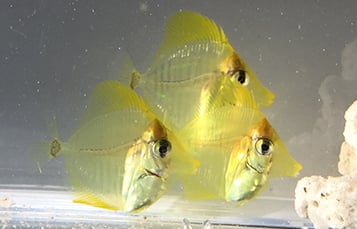From Coral Reefs to Aquariums: Protecting Tropical Fish
Fact: Unsustainable fishing methods are harming coral reefs and tropical fish populations.
Fact: Movies like Finding Nemo and Finding Dory may increase the demand for tropical fish.
Fact: While clown fish (like Nemo) have been bred in captivity for decades and meet the increase in demand, blue tangs like Dory are not.
.jpg?hash=A4E29C88F879776A5C2B227D965DD607BF4834BE&version=1_201812110733)
This is where programs like Rising Tide Conservation play a vital role. Started by SeaWorld, and now including universities, professional aquarists, aquaculture facilities and retail pet supply companies as partners, Rising Tide Conservation promotes efforts to breed and raise marine tropical fish in aquaculture facilities rather than collecting them in the wild.
The program recently celebrated an exciting achievement in October 2015 when they announced a breakthrough in yellow tang breeding at the Oceanic Institute of Hawaii Pacific University. Yellow tang research at OI has been going on for over 15 years and a number of organizations have contributed significant funding to this effort. The yellow tang young were some of the tiniest fish anyone had ever worked with so finding ways to feed them became a multi-part problem that needed a multi-step solution. You can read more about this exciting success story in a recent article in Hakai Magazine.

© of Oceanic Institute of Hawaii Pacific University
While a lot of progress has been made to sustain many of these species there’s a lot of work left to do. Researchers continue to work hard to successfully captive-breed fish like blue tangs, but unfortunately have not been successful so far.
“We still have a lot more work to do. It’s vital that we work with partners across the globe to ensure we have these amazing animals around for many years to come,” St. Leger said.
